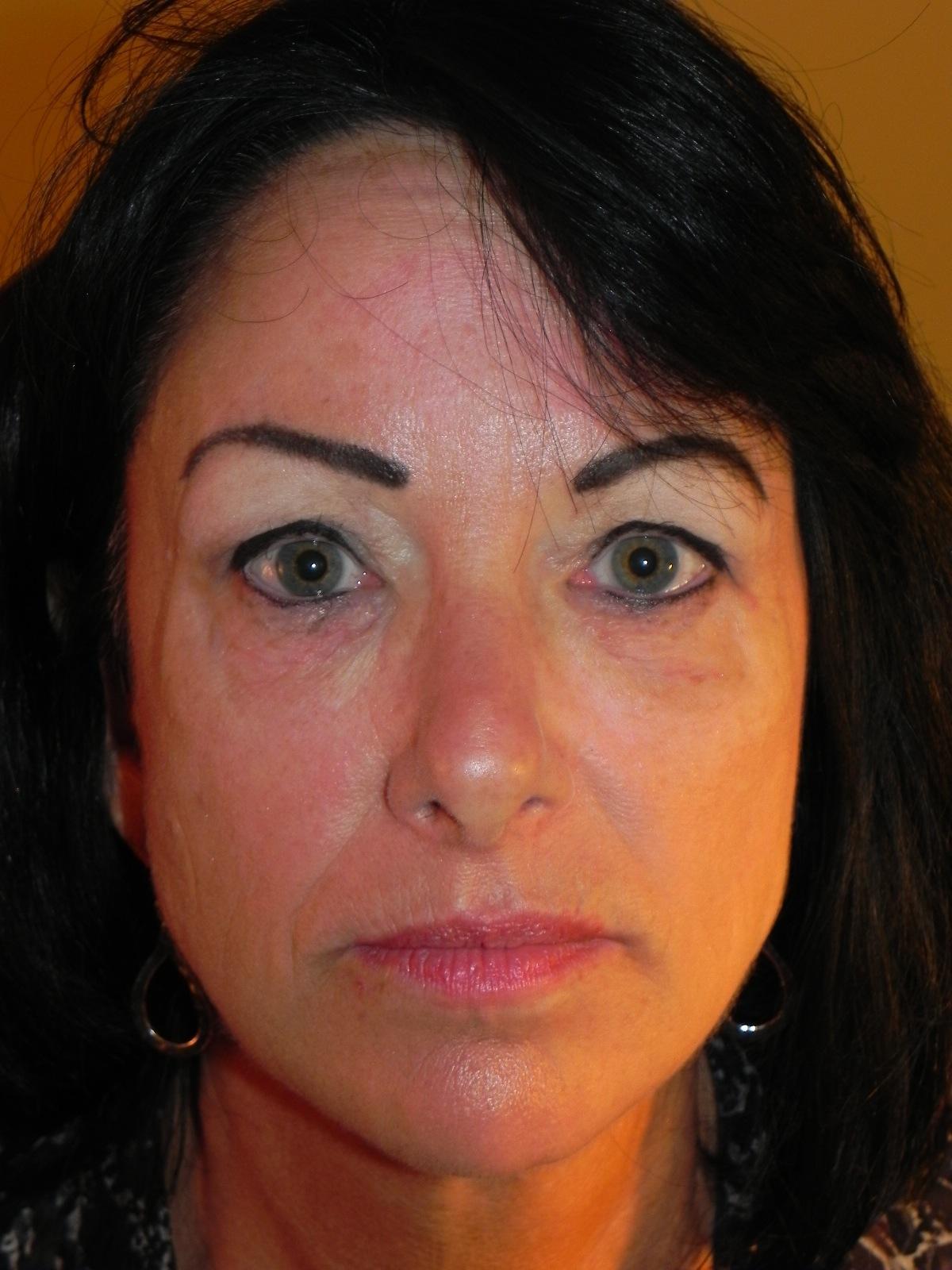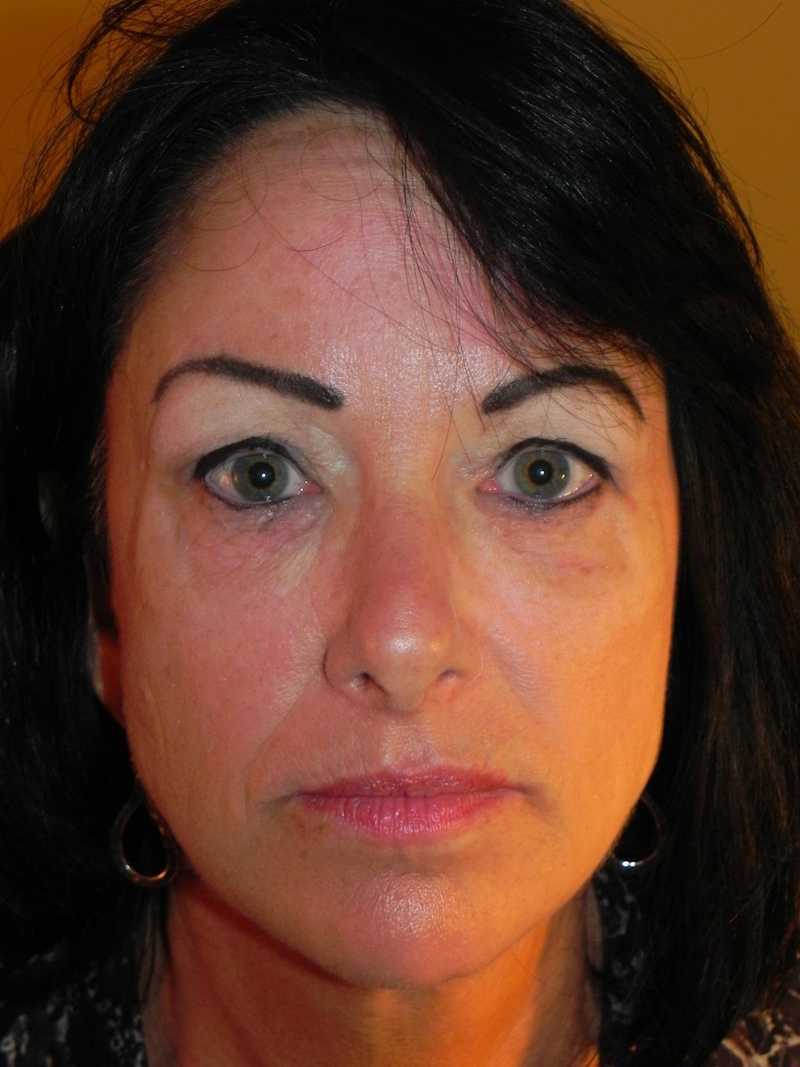All too often, patients who have undergone facial filler placement or facial surgery will notice that their festoons and malar mounds have become more noticeable. Understanding why this happens requires a deeper understanding about the nature of festoons and malar mounds.
A festoon is a medical condition in which the skin of the lower eyelid becomes damaged — usually by the sun. Under normal conditions, elastic and collagen fibers keep the skin taut and tight. These fibers can become damaged by Ultraviolet rays from the sun, and especially by UVA rays. Once damaged, they are no longer able to keep the skin tight and taut, and this creates a potential space in the layers of the skin. Body fluid can seep into this space, leading to swelling of the skin, and this leads to swollen mounds on the cheeks. Festoons are more likely in people with lighter skin types, and often occur with age.
Many people find their lower lids and festoons become more noticeable when they get up in the morning, and assume that the bags under their eyes and on their cheeks mean that they didn’t sleep, but this is not the case. We can be very well rested but our eyelids convey a different message to the world because body fluids have shifted into the lower lid bags.
When we are awake and walking around, gravity takes our body fluids slightly lower, carrying it into our body and legs. But as we sleep we lay flat, and the body fluid in the leg region gets redistributed across the whole body, including the eyelids and cheeks. This is why festoons and malar mounds appear worse in the morning.
Festoons and malar mounds can also get worse after any facial surgery, including eyelid surgery. This is particularly true when surgery is only performed to remove fat from the lower eyelid.
Before eyelid surgeries
The best results come when both lower eyelid fat and lower eyelid festoons are addressed at the same time. When only lower eyelid fat is addressed, the swelling that occurs after tends to have a dramatic impact on festoons.
Lower Eyelid Surgery & Festoon Treatment
Take a look at this patient, who had lower eyelid surgery and festoon treatment on different days.
I’ve outlined the lower lid bags and festoons on the patient prior to surgery in the first picture.
Here she is, in the second picture, one day after lower lid surgery only.
Notice how this potential space was greatly exacerbated after the surgery, resulting in swelling of the festoon region.
Here she is after having both the lower lid bags and festoons treated. The surgery projected a more natural rejuvenation of this area.
Before & After both sugeries
Why Do Festoons Become More Noticeable After Fillers?
Festoons and malar mounds can also become much more noticeable after having fillers placed in the face.
The reason for this is twofold. The first is that fillers placed in the face can generally cause swelling to occur in the face, and some of this swelling can find its way into the area of the festoon. This causes the condition to worsen.
The second problem is that fillers are sometimes placed into the lower eyelid region or festoon directly. I’ve written extensively about the fact that fillers have only a narrow role in the eyelid region, and should only be used in young patients with true hollowing in the inner lower eyelid region.
Using filler to hide eye bags
It is my opinion that attempting to camouflage lower eyelid bags with fillers is a mistake, and often causes irregular results. Likewise, any attempt to put filler in the area of the festoon is also a mistake.
When addressing swollen mounds on the cheek, the goal should be to flatten them. By putting fillers in or around festoons and malar mounds, they become fixed outward and in an elevated state.
This is the exact opposite of the desired effect. It’s best to flatten the festoon, not to inflate them.
Take a look at this patient who had fillers placed under her eyes in an attempt to camouflage lower lid bags and festoons.
The first picture is before filler placement. Notice the loose skin and festoons present.
After placement of fillers, in the second picture, you can see the irregular contours and marked swelling of the festoon.
Fortunately, the filler that was used was a hyaluronic acid, which can be dissolved with a product known as hyaluronidase.
When the swelling was treated with the hyaluronidase, the condition improved dramatically.

Filler dissolved with hyaluronidase
Festoons and malar mounds can wax and wane — that is their nature. Any treatment that causes swelling of the face can also make them swell. Fillers can be useful in many parts of the face, but should not be used in the area of the malar mounds or eyelid festoons.



